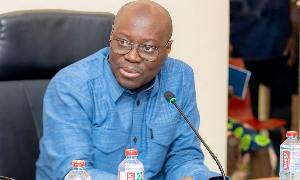Aburi, Aug. 24, GNA - The First Lady of Swaziland, Mrs Nomsah Eunice Matsebula, on Monday paid a courtesy call on the Aburihene, Otoobuor Gyan Kwasi, at the Ankaase Palace at Aburi as part of a state visit to Ghana.
Welcoming her at a mini durbar of the chiefs and people of Aburi, Otoobuor Gyan Kwasi said the visit would help strengthen the royal friendship between the people of Ghana and the Kingdom of Swaziland.
He observed that the chieftaincy system in Ghana was almost the same as that of Swaziland and urged the two nations to consider how best they could benefit from each other in terms of building a better chieftaincy institution.
Otoobuor Gyan Kwasi expressed worry about the increasing number of chieftaincy disputes in the country and said he would ensure that a strong institution was built to avoid the numerous disputes.
He said the time had come for women to take their positions in society and therefore urged various women's institutions in the country to encourage their members to be bold and contribute their quota towards building a strong and united society.
Mr Baba Jamal, Deputy Eastern Regional Minister, commended the first lady for visiting the region.
He said the region had a lot of tourist attraction and therefore urged the first lady to consider how best Ghana and Swaziland could come together and develop some of the tourists sites to generate revenue for the two states.
Mrs Matsebula expressed her gratitude to the people of Aburi for organizing a durbar in her honour.
She said the friendship between Ghana and Swaziland dated back in the 1980s and would continue to grow from strength to strength.
The first lady commended Ghana for providing a positive atmosphere for women to play major roles in the day-to-day administration of the state and other areas.
She later visited the Aburi Botanical Gardens where she planted a commemorative tree and was presented with a traditional stool as a symbol of authority and a Kente cloth.
General News of Tuesday, 24 August 2010
Source: GNA












